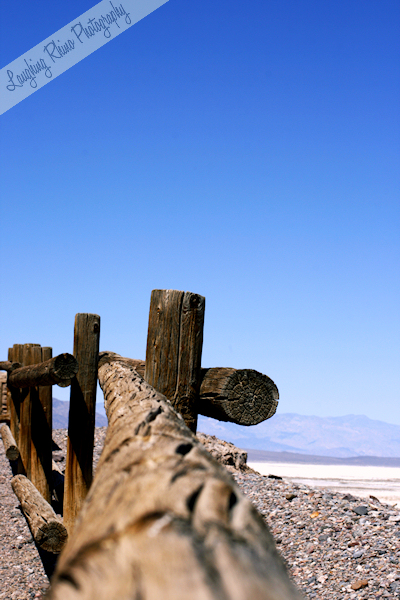Depth Valley
A lot of people have emailed me and asked how I get photos to look a certain way. “That photo is so pretty because of the soft edges and the blurry background. How do you do it?” Here’s a quick answer and two examples. If you still have questions, feel free to leave a comment or email me. I’m happy to help.
Depth of Field is one of the greatest tools at your fingertips when it comes to photography. You can change the entire feel of an image based solely on what aperture you choose.
The following photos are from Death Valley at the Harmony Borax Works. Which image speaks to you more? Why? Or does it matter?
What does aperture have to do with this? What is aperture? F-stop? What? Why? Huh?
The aperture (f-stop) refers to the opening in the diaphragm of the lens that allows light into the camera. Depending on how large the opening is, you can have a lot or a little light coming in: if the number is small — 2.8 for instance — the opening is wide and there is a lot of light coming in; if the number is large — say, 22 — the opening is narrow, thus allowing less light to pass through. This same opening also plays a role in what part of the image is in focus. A lot of light rays coming in results in less of the image being in focus. The light is scattered about on the sensor (assuming we’re talking about digital cameras). A narrow opening concentrates the light rays, packing in a lot of information which results in a sharper image. Think of it this way: if you’re making a shadow puppets on the wall, the closer the light (and you) are to the wall, the narrower the area of the wall that is lit, thus making your shadow puppet sharp and distinct. The further away the light source and you are from the wall, the broader the light cast upon the wall and the fuzzier the shadow becomes.
Because of the ability to select your area of focus by adjusting the aperture, you can change the depth of field (or view) within the image. A shallow depth of field (wider aperture) allows focus to be confined to a smaller area, often resulting in a dreamy, soft, out of focus background. The narrower aperture (smaller opening, larger number), the larger the area that will remain in focus. The background of a photograph shot at f-22 will be much sharper than that of a photo shot at f-2.8.
Below are two photos that are basically identical except for the amount of light I allowed in based on the setting I chose for my f-stop. You’ll notice that there’s a difference in focal point.

Camera settings: ISO – 100, shutter speed – 1/800 second, aperture – 8. The result: shallow front focus, background blurry.

Camera settings: ISO – 100, shutter speed – 1/250 second, aperture – 13. The result: deeper focus, all but the leading edge in focus.
You’ll notice that the film speed (ISO) remains the same for both photos, but the shutter speed changes. You have to change the shutter speed in order to balance the amount of light you have coming in. In bright light, the larger the aperture and the more light you allow in, the faster the shutter will need to be, otherwise you’ll overexpose the image. A smaller aperture requires a slower shutter speed in order to let an appropriate amount of light so that you achieve the proper amount required for your image.
Does that make sense?
If you’d like to read more about aperture, does a fair job of explaining the concept and providing examples. But don’t hesitate to email or comment if you’re still confused.

OH! Aperture is Fstop! Teresa kept talking about aperture and I’d no idea what she meant. LOL!
So far I can only get my camera to go up to 6.5. :(
Comment by Pam — 2009/04/23 @ 06:06
That may be the limits for your camera, Pam. In fact, if I remember correctly, that is the limit due to the fact that your lens is fixed. That’s not a bad thing. It’s just a number and it’ll work fine for the vast majority of your shooting.
Comment by DaGoddess — 2009/04/23 @ 08:27